
Introduction to Bonsai Art
Miniature Worlds of Wonder That Inspire Calm Fascination. Majestic Trees Aged by Centuries Yet Sized to Fit in the Palm of Your Hand. These Living Art Forms We Call Bonsai Capture the Imagination with Their Quaint Beauty and Air of Quiet Nobility. from the Gracefully Twisting Trunk of a Windswept Pine to the Delicate Leaves of a Flowering Cherry Blossom, Bonsai Showcase Nature’s Splendor in Miniature. Although Fully Grown Trees Shaped and Sculpted to Remain Petite, They Relay an Uncanny Impression of Great Size and Presence Through Carefully Crafted Proportions and Balance. It’s Little Wonder Why These Enchanting Plants Have Enthralled People Across Cultures for Centuries.
Originally Stemming from Ancient Chinese Penjing Trees and Later Adapted by the Japanese into “Bonsai” Starting in the 14th Century, the Practice of Cultivating Miniature Potted Trees Is Now Beloved Worldwide. at Once Sculptural and Natural, These Petite Powerhouses Cram Impressive Personality into Small Frames Using a Range of Techniques. the Interplay Between Natural Form and Human Creativity Gives Bonsai Their Unique Depth and Dynamism. Through Strategic Pruning, Wiring, Trimming, and Shaping Over Years and Decades, Bonsai Artists Coax Out Each Tree’s Distinctive Essence. Patience and Care Is Required, but the Rewards Unfold in a Tranquil, Living Art Piece That Calms and Restores. For anyone Seeking a Portable Piece of Nature’s Magic to Enrich Their Life, Exploring the Enchanting World of Bonsai Is Time Well Spent.
Choosing the Right Bonsai Tree
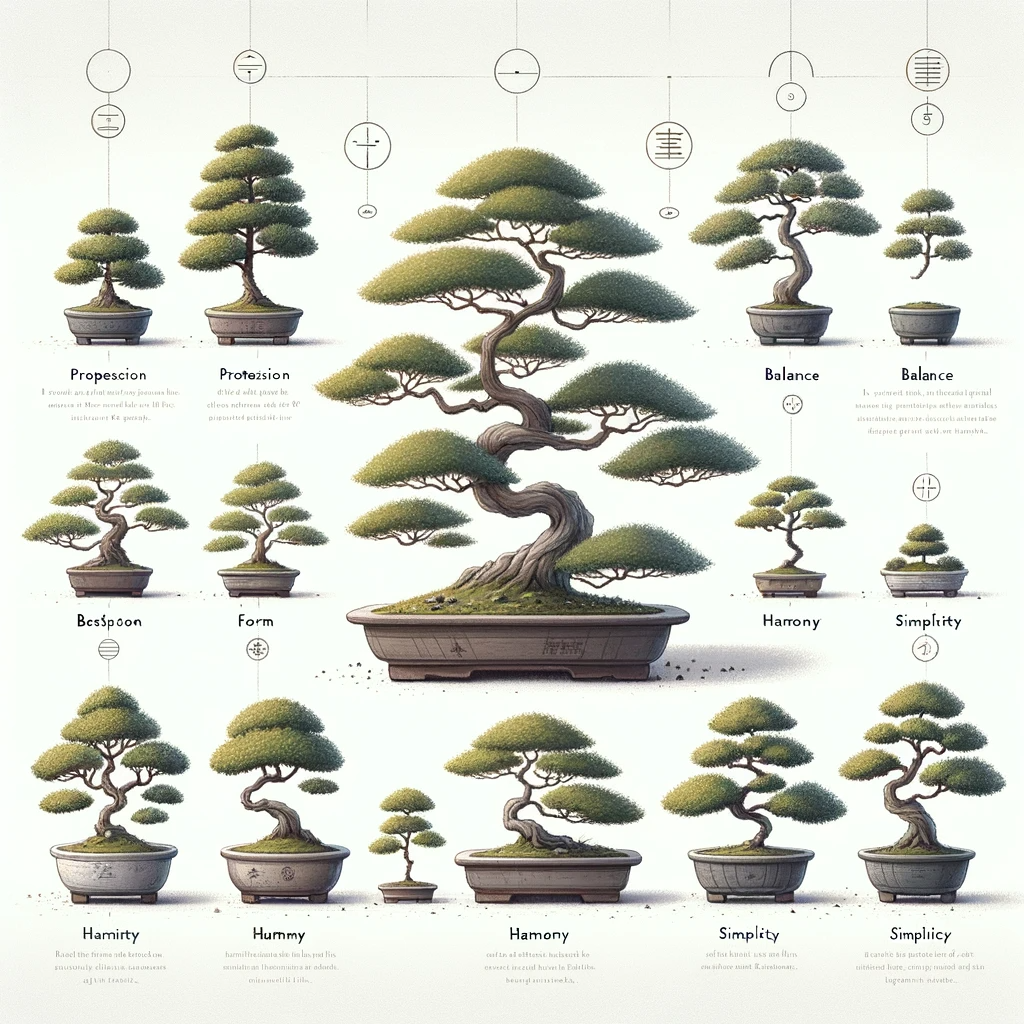
When Bringing Bonsai into Your Home, One of the Most Important Decisions Is Selecting Which Type of Tree Suits Your Environment and Skill Level. The first Major Consideration Is Whether an Indoor or Outdoor Bonsai Is More Appropriate.
Indoor Bonsai Are Tropical and Subtropical Tree Varieties That Thrive Inside with the Right Care. Common Indoor Trees Are Chinese Elm, Hawaiian Umbrella, Serissa, Gardenia, and Ficus. They Adapt Better to Indoor Climates and Have Modest Light and Humidity Needs. an Eastern or Southern-Facing Window Provides Adequate Sunlight, Supplemented with Grow Lights. Since They Are Bred for Indoor Growth, Beginning Bonsai Enthusiasts Will Likely Find Greater Success Cultivating These Trees. They Offer Pleasant Year-Round Greenery and Are Quite Hardy Against Common Mistakes.
Outdoor Varieties of Trees Like Pine, Spruce, Juniper, and Maple Generate Beautiful Autumn Colors but Require Outdoor Winter Dormancy. These More Temperamental Trees Go Partially Dormant and Can Experience Foliage or Root Damage If Kept Actively Growing Over Winter Indoors. They Need Consistent Seasons with Colder Winter Months and Suit a Garden or Backyard. Outdoor Trees Work Well for Intermediate to Advanced Enthusiasts with Additional Space. Take Each Species’ Maximum Height into Account When Choosing.
When Selecting Your First Bonsai, Stay Open-Minded Regarding Species While Considering Your Climate and Facilities. Seek Guidance from Your Local Bonsai Club or Nursery for Recommended Beginner Plants for Your Environment. Avoid Rare Specimens and Stick to Abundant Starter Plants to Allow Room for Early Learning and Development. Patience Is Key with Bonsai, So Select the Right Foundation Upon Which to Cultivate Your Skills Over Many Seasons Gradually.
Placement and Environment

Proper Placement and Care Is Vital for a Bonsai Tree to Thrive. Two Key Environmental Factors to Get Right Are Sunlight Exposure and Temperature/humidity Levels.
Sunlight Fuels Growth and Supports Health Through Photosynthesis. Outdoor Varieties Require Full Sun – Meaning at Least 6 Hours of Direct Outdoor Light Per Day. Species Like Juniper and Pine Need Consistent Sunlight and Can Suffer Without Meeting Light Needs. Indoor Bonsai Can Tolerate Low and Medium Light Conditions. Most Indoor Trees Flourish in an East Facing Window, with Supplemental Fluorescent Grow Lights for 12-14 Hours Per Day. Rotate Pots Periodically for Even Coverage. Carefully Observe Foliage Color and Directional Growth as Indicators of Adequate Sunlight.
in Addition to Sunlight, Pay Close Attention to Ambient Temperature, Humidity Levels, and Seasonal Fluctuations. Outdoor Trees Require Natural Winter Dormancy Triggered by Winter’s Colder Air. Evergreen Pines and Junipers Fare Fine in Winter’s Chill Once Dormant. Deciduous Varieties Need Above Freezing Protection to Prevent Die-Back. Indoor Tropicals Converge on 65-75 F as Optimal Temperatures, Avoiding Extreme Cold or Hot Swings. Monitor Humidity Levels Through Hygrometers. Dry Indoor Air Can Be Humidified Using Pebble Trays or Humidifiers to Reach 40-60% Humidity, Giving Leaves the Moisture They Crave. Air Flow and Periodic Misting Adds Hydration Without Over-Watering Soil. Carefully Note Environmental Factors and Adjust Placement or Accessories to Dial in Conditions.
by Honing in on Optimum Sunlight, Temperature, Humidity and Seasonal Transitions, Bonsai Masters Help Trees Thrive in the Best Balance for Their Variety. Careful Observation and Quick Corrective Actions When Needs Shift Keeps Bonsai Vibrant and Vigorous.
education on bonsai watering techniques
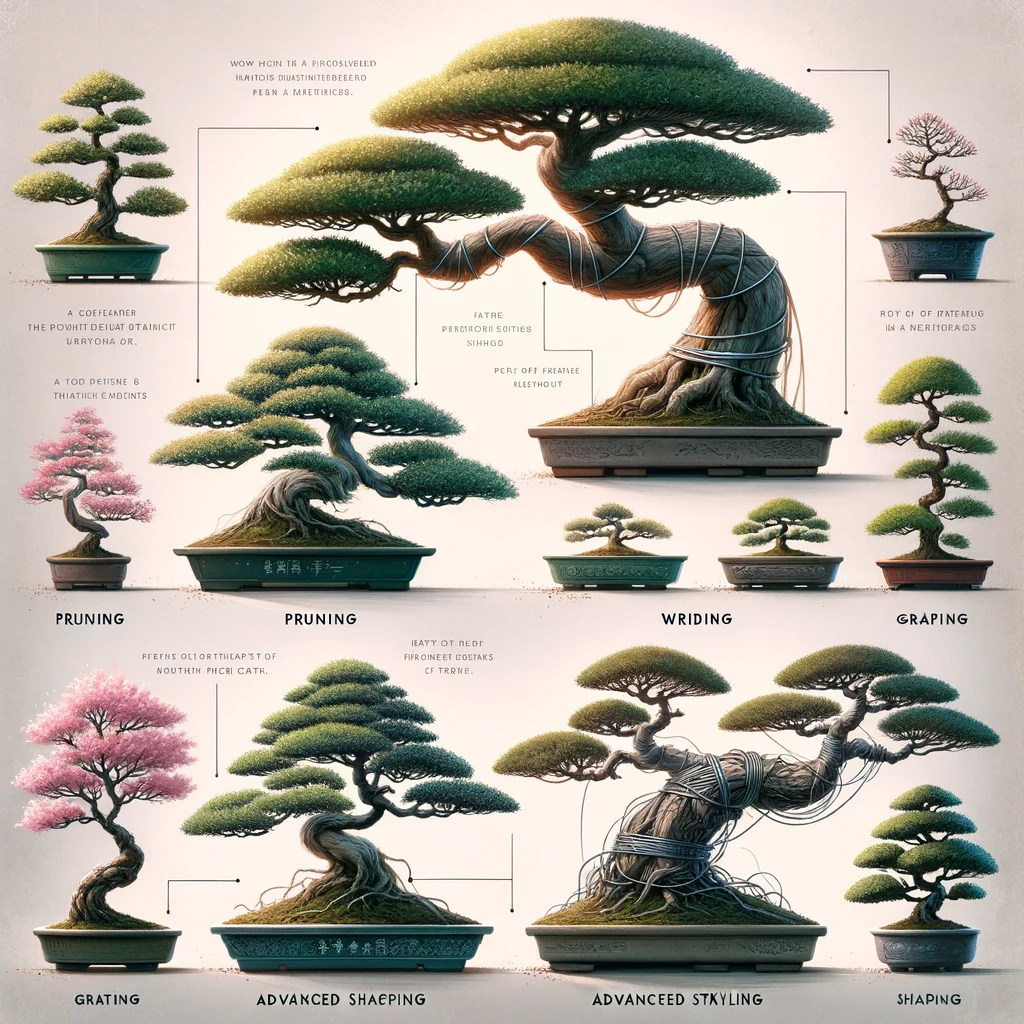
Watering bonsai seems simple, but is actually a nuanced technique crucial for health. The two key aspects are knowing when to water and perfecting your watering method.
Judge when to water based on species, soil dryness, the season, and environmental factors. Feel 1-2 inches into the soil regularly to check moisture levels. Water thoroughly whenever the top layers feel dry. Species like junipers and pines require less frequent watering, while tropical jade and Chinese elm favor more continual moisture. Reduce watering in cooler months or drier weather. Also cut back after re-potting or heavy pruning which shocks the roots. Signs of underwatering include wrinkled leaves, premature fall color, and branch dieback.
Perfect technique by watering gently but completely whenever needed. Water slowly from above with a hose attachment, watering can, or submersion. Soak until you see runoff drain from the holes at the bottom, indicating saturation. Drain excess water so it never accumulates in drip trays beneath. Mist leaves as well for moisture-loving varieties like Ficus. Consistency is key as erratic moisture plays havoc on bonsai. Set up automatic irrigation or easy reminders to develop a good habit.
While observing your tree’s signs closely, keep the soil damp without ever becoming waterlogged. Through regular inspection and ideal pouring technique, strike the right balance for your bonsai’s variety and environment. Signs of health like lush leaves and new buds will soon emerge with proper hydration.
soil and fertilizing for bonsai trees

The foundation that anchors and nourishes a bonsai lies just below the surface – the soil. Two key aspects of soil management are the soil mixture itself and regular fertilizing for optimal health.
Bonsai soil is vastly different than garden variety potting soil. The ideal mixture contains a porous blend of materials that balance water drainage, oxygen circulation, and nutrient-holding capacity. A good starting mix is equal parts coarse sand or gravel, decomposed granite or akadama clay, peat moss, and bark fines. This blend allows sufficient air pockets and drainage to prevent root rot while retaining some essential moisture and nutrients. For particular species, tweak components like adding limestone for conifers or extra organics for tropicals. Re-pot every 2-3 years with fresh soil as older mixtures degrade.
Fertilizing supplements nutrition lacking in bare soil mixes. Apply balanced liquid or pelleted fertilizers monthly during peak growing seasons according to label directions. Organic fish emulsions, seaweed extract, and compost teas make excellent natural alternatives. Rotate formulations to provide a wide spectrum of macros and micros. every few months. Slow-release pellets blended into the soil moderate between feedings. Flush soil annually to prevent accumulated salts which can burn roots. With attentive feeding, balanced soils will sustain steady new growth.
Target the specific chemical and drainage needs of your bonsai species through customized soil blends and regular fertilizer regimes. Watch your miniature tree thrive within its productive potted landscape.
basic pruning and shaping techniques for bonsai
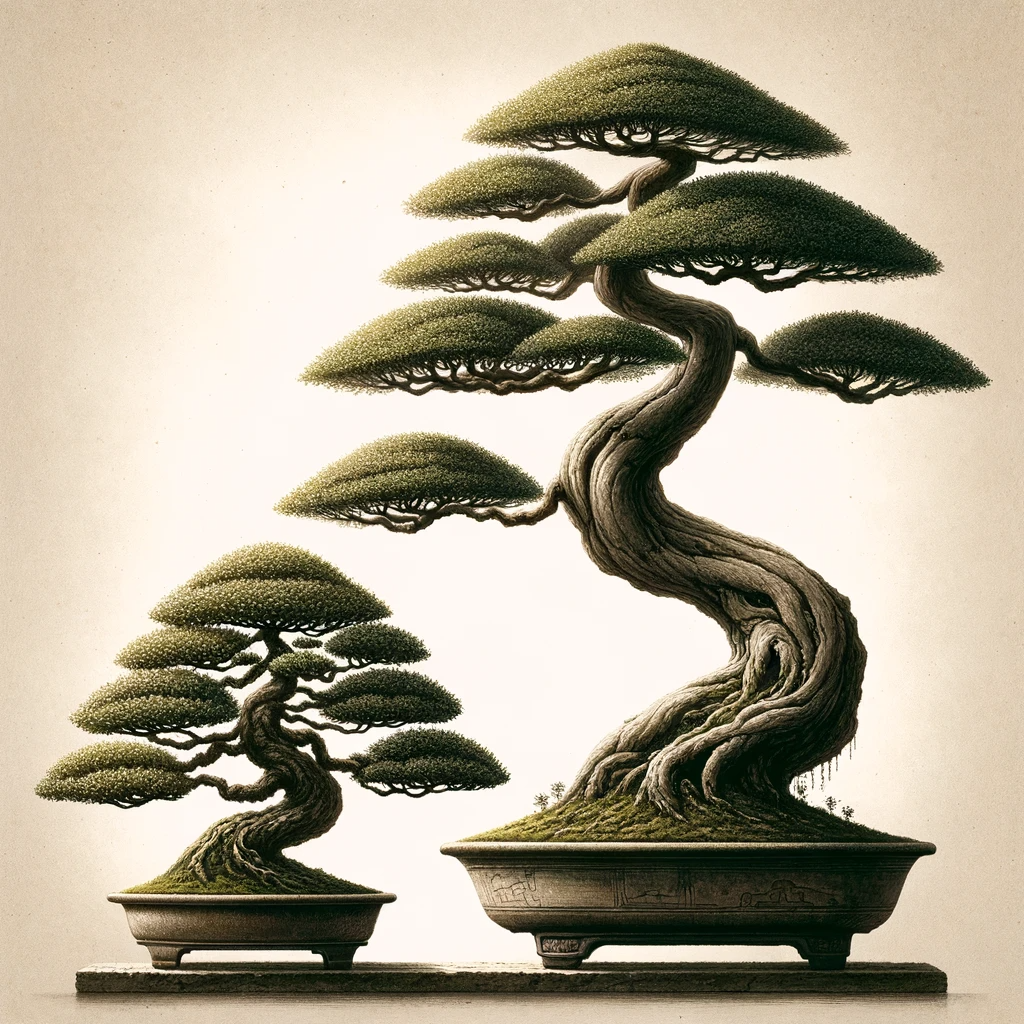
Pruning and shaping techniques allow enthusiasts to guide the form of their bonsai trees over time. The two core beginner techniques to master are basic pruning cuts and initial shaping through wiring.
Practice making clean pruning snips to shape branches and foliage pads. Use ultra-sharp concave cutters to avoid crushing stems. Make cuts just above lateral buds or branches, angling slightly downwards away from the bud. Remove fully any cut growth down to the trunk or parent branch collar. Prune the back tips of lower branches more aggressively than higher ones for desired triangular shapes. Also, prune interior growth to allow light and airflow inside. A good rule of thumb is to remove up to one-third of living branches per year as vigorous new ones replace them.
Wiring gives significant control over directing bonsai shape too. Carefully wind copper wire around branches bending them gently into position. Wrap protection on contact areas first to avoid scarring bark. Curve-wired branches into natural downwards or sideward arches gradually over weeks. Unwire established shapes once they hold on their own to avoid biting in. Wiring lets enthusiasts shape basic forms like windswept, semi-cascade, triple trunks, and more. Guide growth purposefully towards aesthetic goals through strategic wiring and pruning cuts over successive years.
With basic training, bonsai artists carefully direct small trees in remarkable ways through non-invasive branch manipulation and foliage removal. Study growth patterns and safe limits. Then craft your vision branch by branch as skills develop.
common bonsai pests and diseases
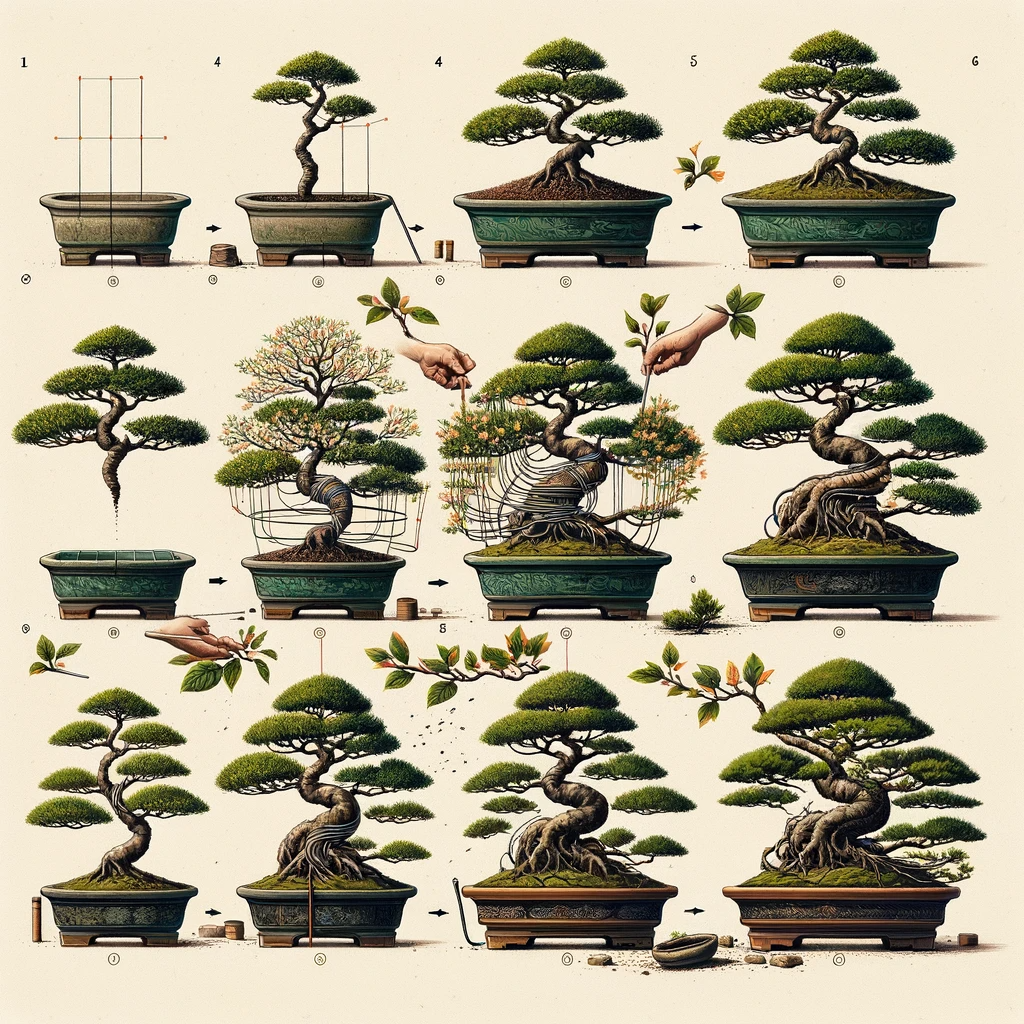
Like all plants, bonsai trees face threats from pests and diseases, especially when environmental conditions sub-optimize. Learn to spot and treat a few common issues facing beginning growers.
Insect pests like spider mites, scale, mealybugs, and aphids can rapidly infest indoor trees. Check the undersides of leaves and branch junctions for tiny pests or telltale sticky residue. Treat infestations immediately with horticultural oils or insecticidal soaps following label safety guidelines. Isolate affected plants and prune away unsalvageable growth once pests clear. Release ladybugs or introduce predatory mites to organically control future outbreaks.
Fungal diseases often manifest as leaf spots, powdery mildew coatings, rust fungus or root rot. While some fungi naturally occur by season’s end, aggressive cases indicate overly moist conditions. Improve airflow and leaf moisture using fans and fungicidal sprays. Always sterilize pruning tools between plants to limit transmission risk. Preventive applications of neem oil deter common pathogens for some species. Identify and treat diseases early before significant damage occurs through attentive inspection and quick triage.
While even seasoned growers face intermittent threats, beginners can avoid losing treasured trees by recognizing and swiftly responding to common invaders. Catch issues early, isolate affected plants, and deploy integrated treatment plans using both chemical and organic controls synergistically. With vigilant monitoring and rapid response, bonsai masters protect precious wards even in imperfect conditions.
conclusion
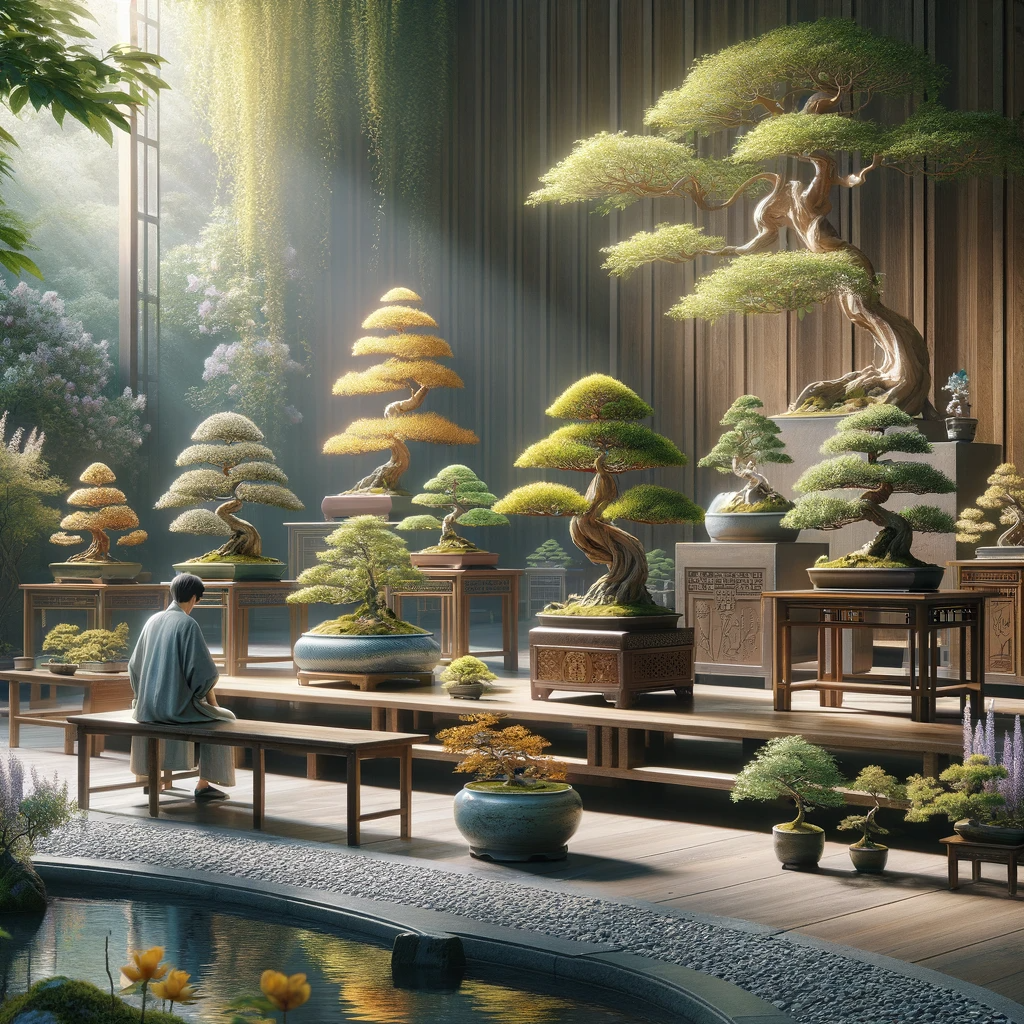
The captivating world of bonsai offers a meaningful, relaxing hobby that connects plant lovers to nature. While raising miniature trees requires dedication and care, the practices bring ample rewards through natural beauty and creative fulfillment.
Looking back, we covered critical basics like choosing suitable trees, positioning them in ideal growing environments, and attending to water, soil, and lighting needs. Core techniques introduce how strategic pruning and wiring gradually shape elegant forms over time. Even challenges like pests and diseases can be overcome through vigilance and integrated care. Consider all that you have learned so far as a strong foundation to support growing enjoyment.
Do not worry about struggling at times on your bonsai journey, as nature progresses in cycles and so will your skills. Patience and persistence through successes and setbacks ultimately lead to proficiency. Joining local bonsai clubs, reading specialty books, or taking workshops all help accelerate practical knowledge. With each passing season caring for your aging tiny tree, appreciate the deepening bond that forms. Soon enough, when guests marvel at your Japanese maple or flowering Serissa, you can share secrets behind creating such magic in miniature. Let your inspiration guide you to nurture not just trees, but an ever-growing inner calm that comes from time spent cultivating beauty and focus. Your journey with bonsai has only just taken root and promises to fill your life with resonance for many years to come.
FAQ
1. How long do bonsai trees live?
With proper care, bonsai can live for decades or even centuries. Some of the oldest specimens in Asia are over 800 years old! Support tree health and they can outlive their growers.
2. Can bonsai trees grow fruit or flowers?
Flowering and fruiting bonsai varieties certainly exist. Popular flowering choices are cherry blossom, camellia, gardenia and azalea bonsai. Fruiting olive, blackberry and fig trees make unusual specimens. Enjoy seasonal blooms or fruits but prune back as needed.
3. Does pruning hurt or damage bonsai trees?
Thoughtful pruning does not harm trees as it mirrors natural growth patterns. strategically remove branches to guide desired shapes. Limit to no more than one third of living branches yearly. Prune just above buds or branches without leaving stubs to minimize stress.
4. Do indoor bonsai require special equipment?
Basic indoor trees need bright windows, grow lights, humidity trays and quality potting soil. Avoid extremes in temperature and low humidity from heating or AC systems. Advanced hobbyists use greenhouses, specialty soils, grafting tools and more.
5. Is bonsai a high-maintenance hobby?
Bonsai trees are not high-maintenance per se, but do require periodic care sessions and vigilance. Establish regular watering, pruning, feeding and inspection cadences tailored to your trees’ needs. Automate where possible and bonsai thrive with limited but focused attention.
